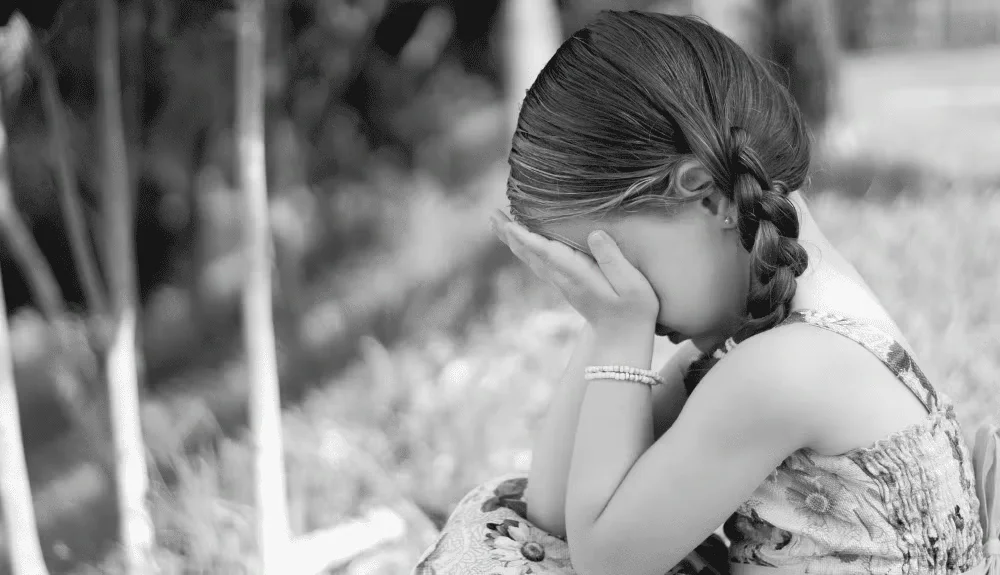
06 Aug Rejection wounds: how to achieve healing?
My name is Laurence DELINOT, and for the past 15 years, I’ve been welcoming people into my practice, who confide in me their state of mind, their history and their emotional wounds. Their aim is to free themselves, to heal and tobe actors in their own lives. Emotional wounds are those of the child we still carry with us into adulthood. I also offer online hypnosis sessions. We’ll decipher the wound of rejection through its symptoms and the mask associated with it. It’s possible to heal from this wound thanks to ongoing support to healing the inner child usinghumanistic hypnosis.
What is rejection injury and what are the symptoms?
The wound of rejection sets in from conception to 1 year. When the pregnancy is unwanted, or when one or both parents want a child of the opposite sex. A child with this wound is unaware of it, but lives with it every day in an environment where everything means exclusion.
Its right to exist is called into question. In his family with his parents, the lack of communication, affection or interest in him activates his wound. When we have this wound, we unconsciously attract situations that validate the rejection. The arrival of a little brother or sister, or a parent’s preference for the older child, whether real or imagined. Neglectful or absent parents, who sometimes simply have difficulty expressing their feelings or affection through hugs or words of love.
The child begins to exclude himself. At home, he can isolate himself; at school, he can stand apart. They may be contemplative and dreamy. Behavior is characterized bysocial avoidance when it’s a question of integrating into the group. The question of place is central. There’s a tendency to walk alone. It’s interesting to make the link between this injury and the type of avoidant attachment.
What are the consequences of the wound of rejection?
One of the consequences of this wound is a deep, existential loneliness. A void of meaning, not feeling in tune with the world, feeling out of touch, out of step. L’generalized anxiety is another consequence. The constant fear of being judged and rejected prevents the child from developing good self-esteem.
How do you know if you have a rejection wound?
In short, there are a number of signs that can help you spot this injury.
1- Avoidance
To avoid suffering, the person will avoid becoming attached to or investing in relationships. The attachment disorder is the defense mechanism that immediately establishes a distance that nips in the bud the possibility of building and projecting oneself. But above all, to nourish emotional needs.
2- Low self-esteem
People question themselves before they question others in a given context. If you’re excluded or invisible, you’re not interesting, you don’t deserve attention.
3- Guilt
To find a reason for rejection, the person may also think they’ve done something wrong, or said something that shouldn’t have been said. They ruminate and replay situations in their heads. This increases anxiety and is mentally exhausting.
4- A feeling of profound loneliness
“No one misses me”, “I’m transparent”: that’s what a person in pain may say to themselves. They shut themselves away in their ivory tower.
The mask of the wound of rejection
Every emotional wound has its own mask, i.e. a type of behavior or reaction that, taken together, defines a personality. The mask is a defense mechanism. A way in which the unconscious protects the wounded parts.
The mask of rejection is the fugitive’s personality. When interacting with others, the person may feel invisible and withdraw. To avoid feeling this rejection, they may find a number of ways to compensate. These include dissociation by cutting themselves off from their emotions or feelings, taking drugs oralcohol, running away, leaving in a hurry, or changing decisions suddenly. As with all injuries, denial helps them to live. The person also cuts himself off from the outside world to take refuge in his imaginary bubble.
What causes rejection?
Certain situations require emotional involvement. Relationships, whether romantic, friendly or professional. Every time there’s a link with another person who could judge and reject. The person is always second-guessing himself, feeling guilty, doubt is always present as long as there is no recognition expressed, and even when this recognition comes, it’s not enough or not true, because rejection goes hand in hand with the feeling of illegitimacy.
Why does rejection hurt so much?
It’s easy to see how, in the midst of constant doubt about one’s right to exist, this wound is very painful. If the mask of the shirker has a protective function, it doesn’t heal the wound. The difficulty of establishing healthy, authentic and lasting relationships is a suffering when, paradoxically, what the person suffering from this wound needs most is the permanent recognition that he or she is valid and worthy of being loved. This wound is perhaps the most paradoxical of the 5. The development of an anxious state is often associated with this wound, as the person is on the alert, in a quasi-permanent vigilance not to displease and take the risk of being rejected. This demands adaptation, which eventually leads to exhaustion, withdrawal and isolation. A deep loneliness is often felt, as the beliefs linked to this wound prevent the formation of lasting relationships.
How do you react to emotional rejection?
The first reaction is to respond to rejection by fleeing. Recognizing the emotion that arises is a good reflex. Often, it’s anger expressed in the form of coldness or sniping, or sadness experienced in withdrawal. For the person suffering the rejection of the person who has been hurt, identifying this hurt is essential.
How to rebuild your self-esteem with hypnosis?
The wound of rejection, as we saw above, is a deep, narcissistic wound. It calls into question our existential value. Living with this wound means seeing everything through the prism of rejection. It means seeing ourselves as worthless, as nothing. The only way to rebuild your self-esteem is to engage in a therapeutic process to identify the source of the behaviors in the first instance, making the link with past events helps to make sense of the confusion and suffering.
Hypnosis enables you to reconnect directly with the wounded parts of yourself that have experienced rejection. Denial, dissociation and amnesia are effective protections against suffering for a time, but sooner or later it will return in the form of repetitive relational patterns that inevitably cause suffering. In the altered state of consciousness induced by hypnosis, it is possible to relive certain memories with their associated emotions, in order to free oneself from them. Over the course of the sessions, the client becomes fully aware of his or her wounds, dissociating them from reality. In the case of maladaptive behavior, they can find the words to express their disagreement without running away. Parasite thoughts will be less present, as this therapeutic process also thwarts the judgmental thoughts that were controlling the person. Healing the wound of rejection doesn’t mean getting rid of it completely, like returning to amnesia, but it does mean no longer suffering from it, by welcoming our emotions and reassuring the little one in us. The adult can then fully exist.
Make an appointment with Laurence DELINOT

